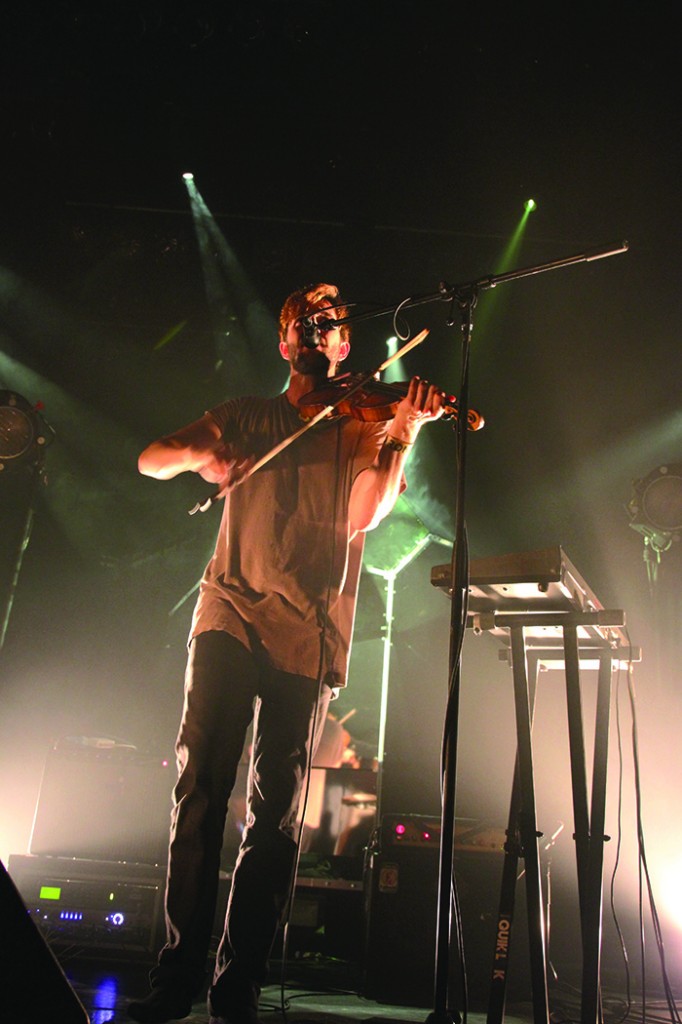As far as entrances go, Owen Pallett’s first appearance on stage during his concert at the Corona Theatre last week was a humble one.The bearded singer-violinist walked on set before his show had even started and prepared his equipment—a violin, plugged into a loop pedal—with minimal fanfare. In fact, the entire show was characterized by how down-to-earth Pallett was—even in the most energetic moments of the concert. His unassuming character was matched by his incredible stage presence and vitality, a surprising marriage of traits that don’t typically go together.
Also pleasantly surprising was Pallett’s diverse choice of songs from his entire solo discography. Pallet brought a highly appreciated energy into songs such as “That’s When the Audience Died” from his seminal first album Has a Good Home (2005) and “Song for Five & Six” from his latest album, In Conflict (2014). Listened to through a pair of headphones, the songs are upbeat but serene, Pallet’s voice crooning through the pizzicato of his violin. On stage, the artist coaxes crescendos and guttural cries from his own singing and from his instruments. The addition of a drummer and guitarist to the set also lent the show a very danceable rock ‘n’ roll atmosphere.
Pallett’s unconventional performance also added to the theatricality of the concert. He built up his songs layer by layer, recording sounds live through a loop pedal that he would manipulate throughout the set. Listening to the live construction of songs that I’d first heard years ago was eye-opening to say the least, as was hearing the many ways through which Pallett manipulated the violin—tapping on the wooden body of the instrument to create drum loops, or scraping on the strings of the violin to create an eerie, reverberant backdrop to his songs.
Pallett’s masterful control over the many complicated aspects of his set was well-appreciated. Pallett has done extensive work with bands such as Arcade Fire, and his very genre of music—indie pop/rock centred around a solo-violinist—is a breeding ground for moody artists, but Pallett’s professionalism throughout the complex set dispelled any thought of a downbeat atmosphere.
To cap off the polished performance, the lighting and props for the show were fantastic: The lasers, strobes, and flood lights framed the performers in sharp angles, with the lights’ geometric complexity paralleling the show’s musical precision. The sole prop was an enigmatic sculpture shaped like an angular quartz crystal that was larger than Pallett himself. Depending on the lighting, the sculpture reflected the stage in a haze of smoke or shone ominously in black. The venue itself was cozy and curtained in red velvet, but not too small—even if the imposing frescoed cherubs on the theatre’s ceiling were slightly off-putting.
All in all, the concert was fantastic. The sound was a surprising but effective departure from the tone of the albums, and very apt for the four hour show, which needed a little upbeat rock ‘n’ roll to keep the audience engaged. Pallet’s unassuming attitude and professionalism combined with his passion for the music kept the atmosphere enjoyable, and it was simply fascinating to see the song construction in real time. The concert was, if anything, more of an artistic performance than a musical set strung together from a list of songs—effectively exposing Owen Pallett’s proficiency as a performer.









